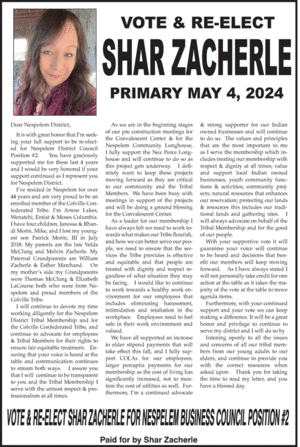The show must go on: school during COVID next fall
Local task force to rethink schools with new guidelines
Last updated 6/22/2020 at 6:33pm
The institution of public school will look a lot different in the 2020-21 school year due to the COVID-19 health precautions that will still be in place, and schools are now beginning to grapple with freshly issued state guidelines that bring the challenges into focus.
Last week, the state Office of the Superintendent of Public Instruction released guidelines for how to resume school in the 2020-21 school year in keeping with Department of Health safety precautions during the COVID-19 pandemic.
The guidelines anticipate a return to the physical schools in the fall but include such restrictions as maintaining 6-foot distances between everyone, requiring students, staff, and visitors to wear cloth face coverings or face shields, health screening for all prior to entry to school, and more.
Multiple options are presented to schools to keep in line with these restrictions, including the option of a rotating schedule for students to attend school in person some days, and do distance learning other days.
The guidelines include encouraging schools to cancel field trips, assemblies, and other events that make social distancing difficult, as well as suspending or modifying classes such as choir or band that make wearing a mask difficult.
Ideas for school meals include having them served in the classrooms, encouraging students to eat outside when possible, and avoiding cafeteria settings.
Staggering arrival and departure times, class dismissal times, and lunch times is another way to make social distancing easier, the guidelines say.
The guidelines address other topics as well, such as making digital access for all students at their homes a priority, cleaning and disinfecting protocols for the schools, transportation, and more.
The guidelines include a letter from Superintendent of Public Instruction Chris Reykdal to school leaders. “Nothing we have been through these past three months was in the training manual,” the letter reads. “Not in your formal education, probably not in your lived experience, and certainly not faced by the system as a whole.”
“Please take the opportunity over the next three months, to not just reopen schools, but to make changes you have wanted to make for years,” the letter continues. “Dive into your grading policies, homework policies, disparate technology access, learning standards, mastery and competency-based learning models, flexible options for students, multi- tiered systems of support, and other innovations. … There has never been a bigger moment to examine our education system and improve our practices to further close opportunity gaps.”
Concerning school budgets, Reykdal says that “we are confident that our basic education funds are stable and will be the Legislature’s top priority.”
Local
perspectives on OSPI guidelines
In a phone interview Tuesday, Grand Coulee Dam School District Superintendent Paul Turner said he has been talking with other superintendents about the OSPI guidelines.
“We’re all frustrated,” Turner said. “With masks and social distancing, how do you accommodate that? Some of these requirements don’t make sense, and we’re hoping they will revamp them and change them, but we don’t know if they will or not.”
Turner brought up the scenario of a student refusing to wear a mask as a possible dilemma. “Do we suspend him from school?” Turner asked.
On school buses, plexiglass could be installed between the rows of seats, Turner explained, saying that the masks requirement will be more important and that the 6-foot distance rule isn’t practical for busing because of how difficult that would be.
A staff member may have to be added to each route, Turner said, to take students’ temperatures and monitor for symptoms.
A student who shows signs of sickness before getting on the bus is another dilemma, particularly a younger student whose parent has left for work. You can’t just send the student home, Turner said.
Another big challenge, Turner said, will be communication between teachers and students.
If a teacher has to present a lesson while wearing a mask, muffling that teacher’s voice in the process, the lesson will be harder to teach, and harder to hear for the students.
“Every question generates 10 more questions,” Turner said on designing school to follow the new OSPI guidelines.
A task force of LR staff members has been assembled to look at these questions and present possible answers, Turner said, with staff members representing different aspects of the school, from teachers to paraprofessionals, food services to transportation, and more.
Jeff Piturachsatit teaches seventh- and eighth-grade math at Lake Roosevelt where he traditionally averages about 24 students in a class.
After measuring his classroom, which he says is average size for the junior/senior high school, he determined he could accommodate about 15 students in keeping with social distancing guidelines.
Turner said that a combination of in-school teaching and distance learning is possible to accommodate the social distance guidelines.
“It has to work out,” Turner said. “We’re going to open this fall. It gives us the opportunity to redo education. That being said, what does that look like? We have to come up with a way on how to do that.”
Turner said that, with the school year ending this week, that everybody needs a break from thinking about the topic of school during the time of COVID, and that in the middle of July, hopefully people’s minds will be relaxed and can address the issue with fresh ideas.
The school board will need to pass a resolution for their plan for the upcoming school year, sometime in August, Turner said, before the next school year starts, something that will be worked on in the meantime.


Reader Comments(0)